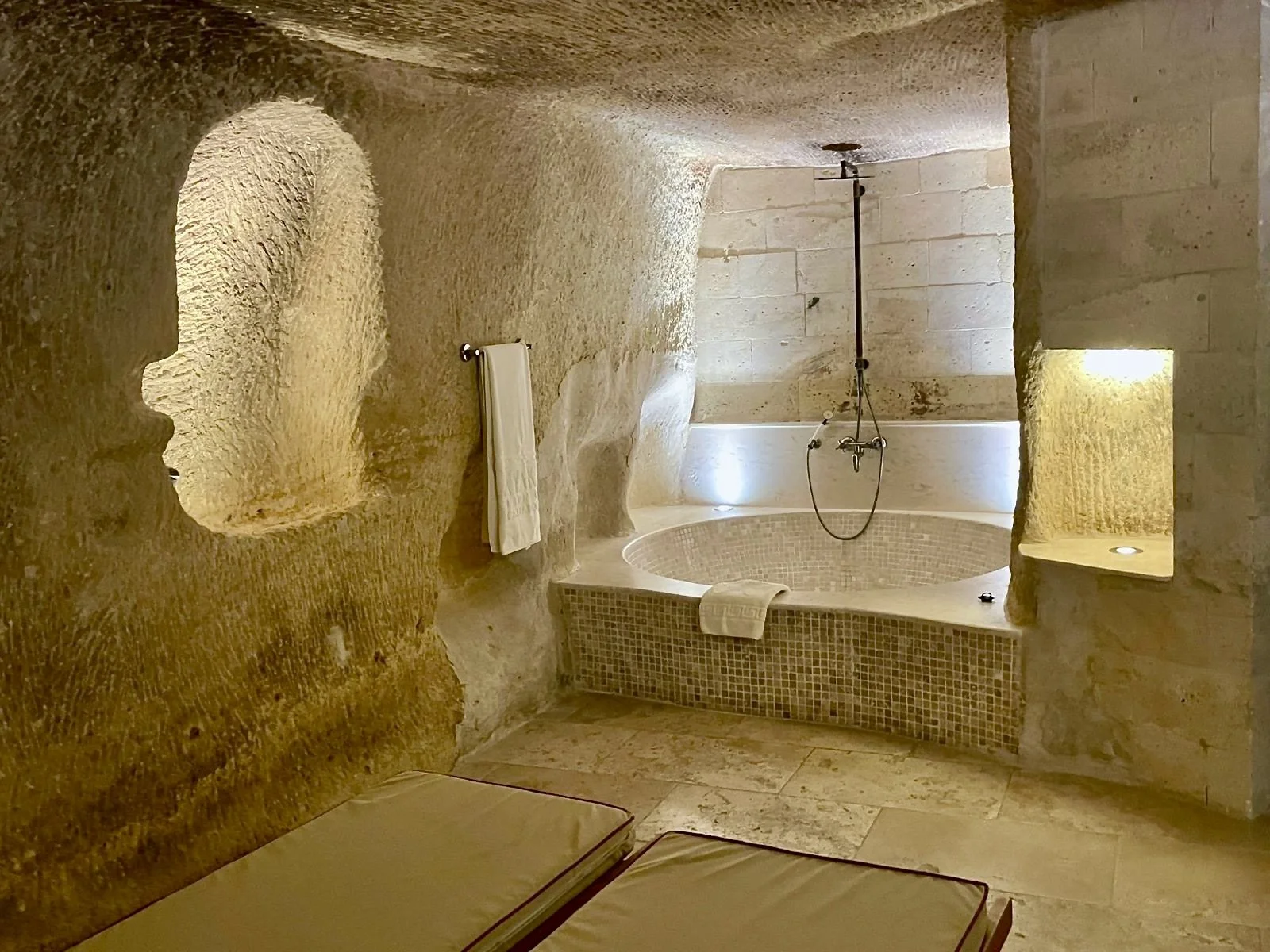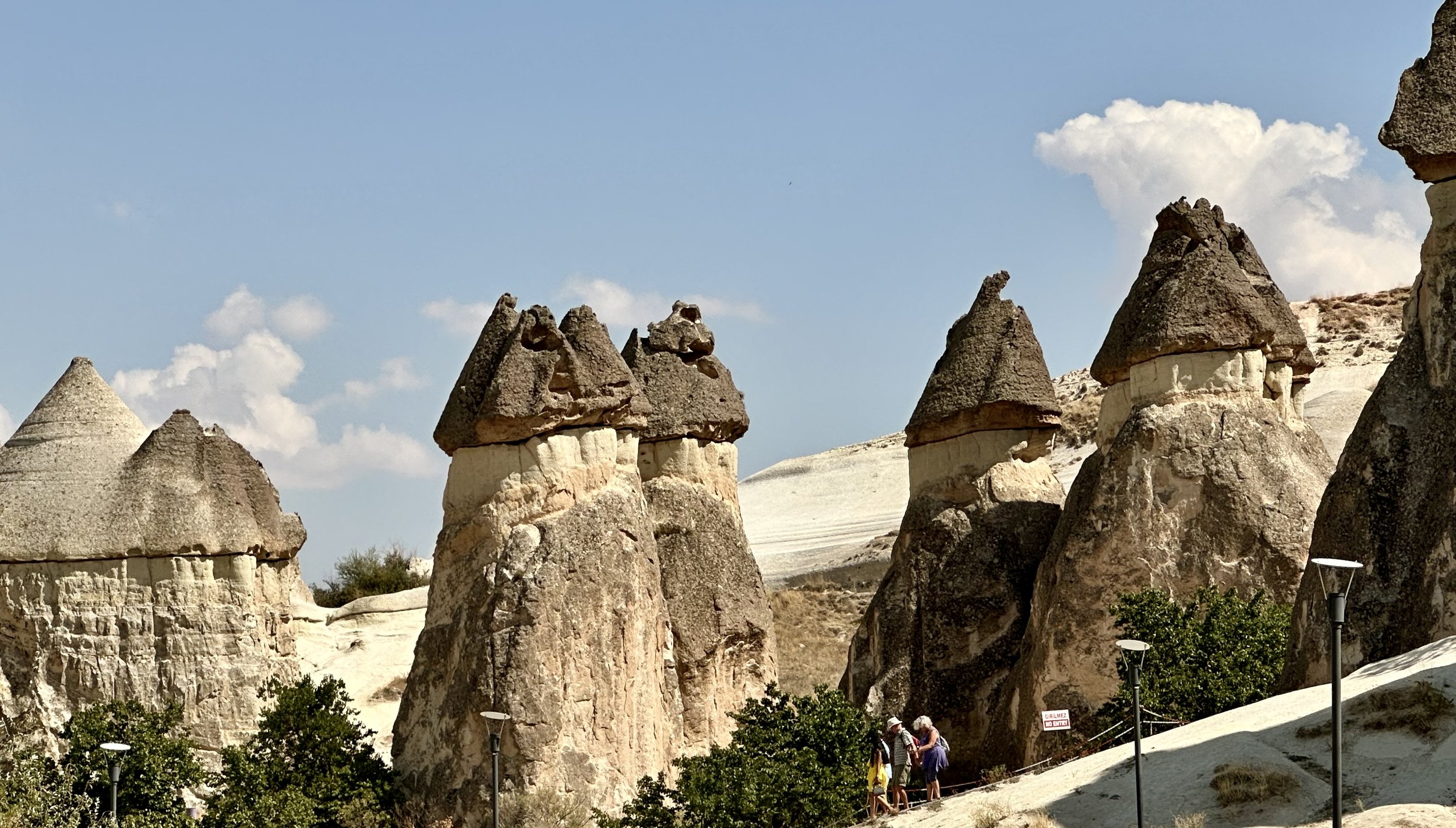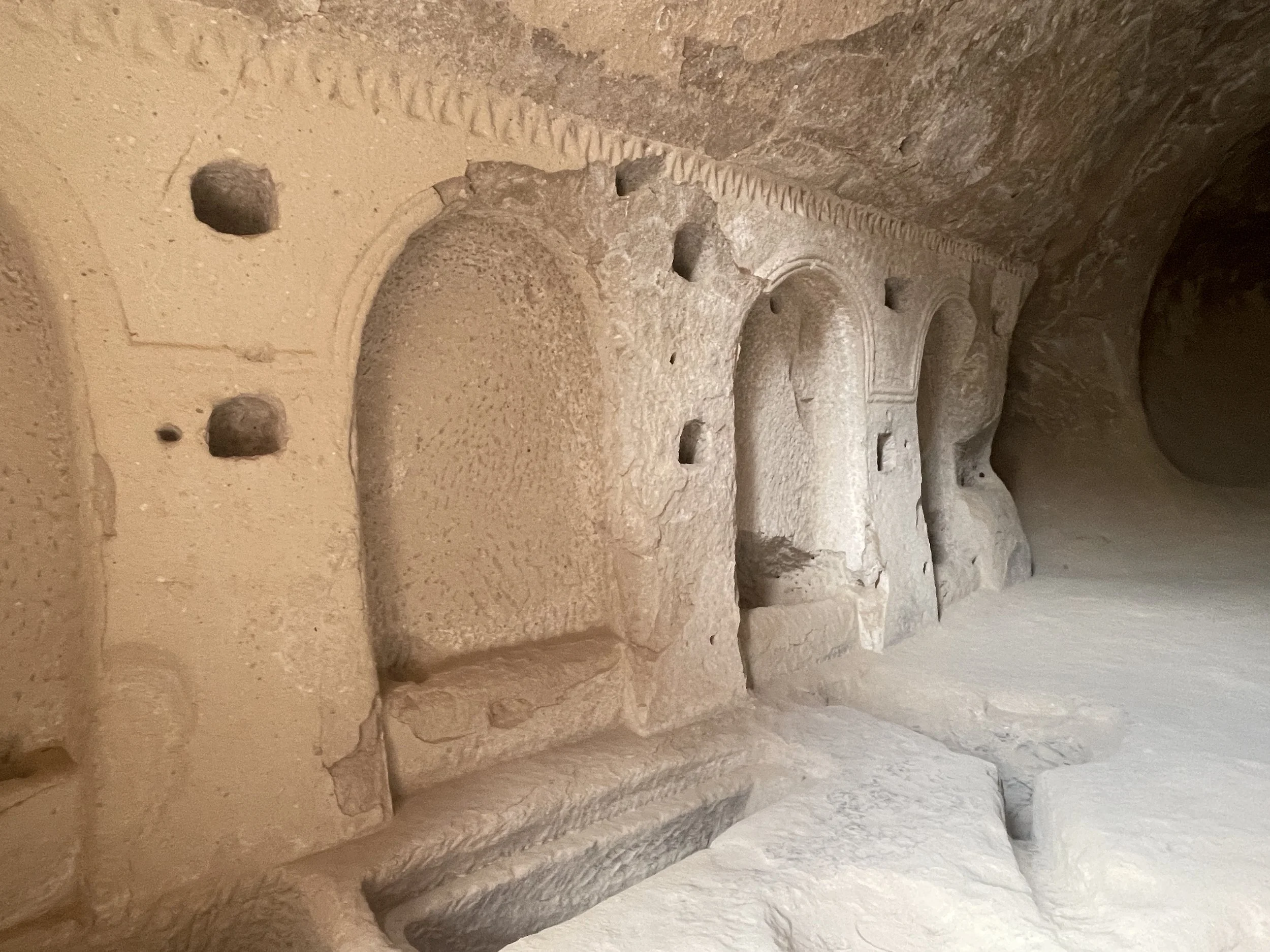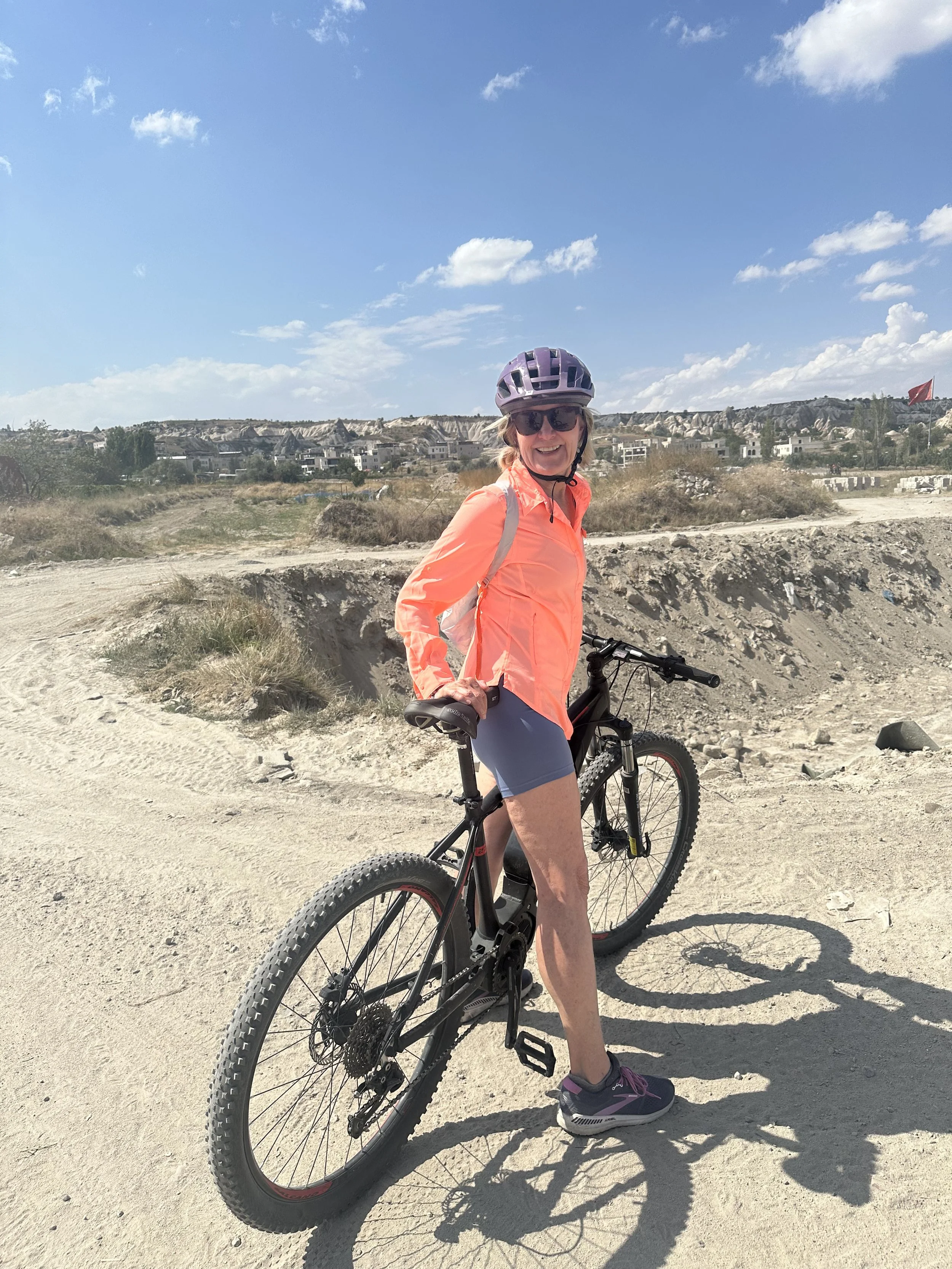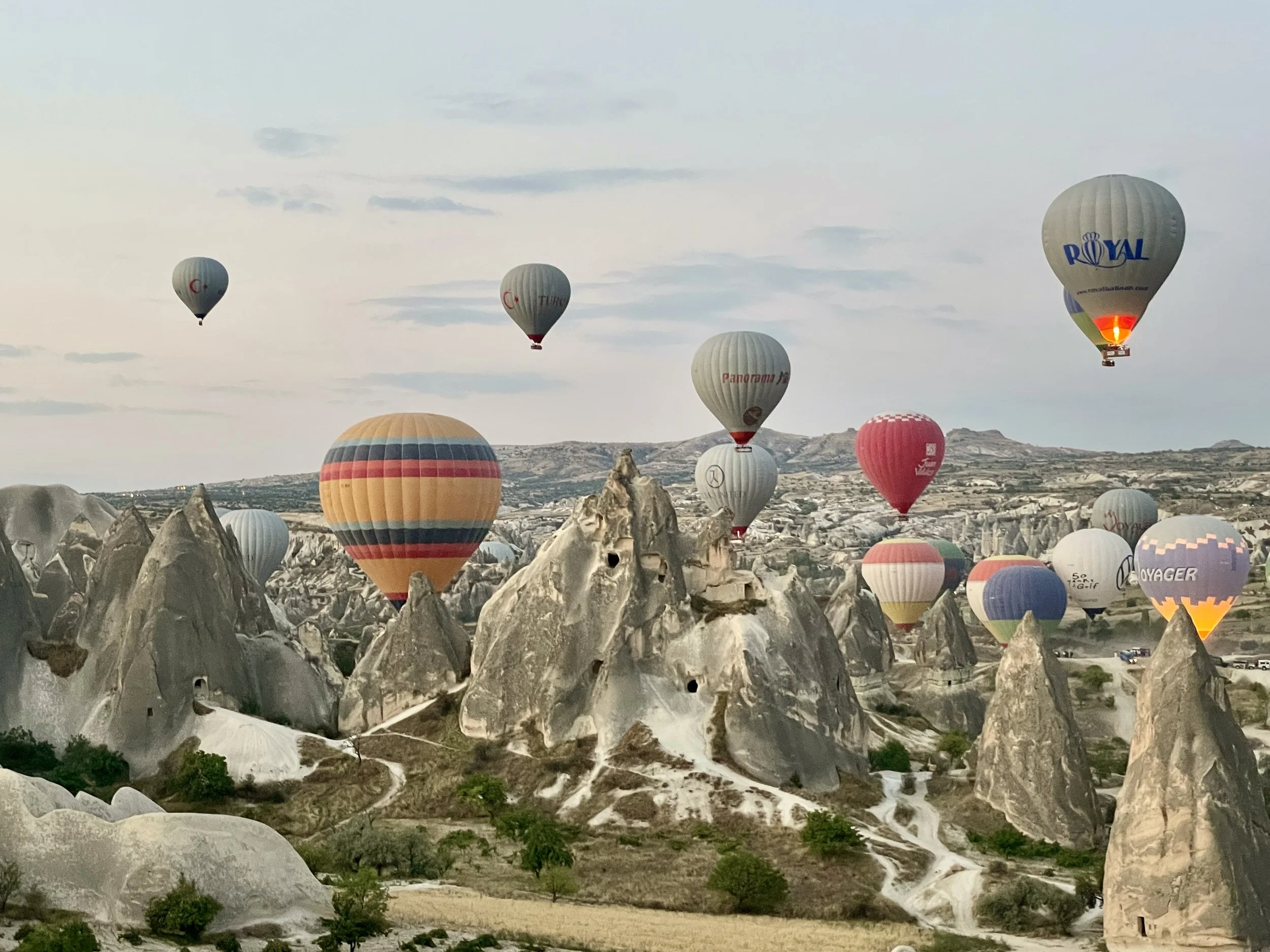Turkish Delights (Part 2)
Yes, I’m back! The pandemic brought travel to a standstill, and since lockdown, I’ve been busy finishing my murder mystery. I hope (fingers crossed) to secure a literary agent and, ultimately a publisher. I’ll keep you posted…
The magic of Turkey bubbles over in its history, culture, and exotic scenery. It’s so generously packed with riches that our most difficult decision was choosing what NOT to see. However, Cappadocia and the strange lunarscapes of central Turkey ranked as unmissable. Guide-book photographs don’t do this bizarre wonderland justice. Its honeycombed hills and towering boulders blew me away. And bonus, our hotel room, a five-star cave, appealed to my thrill-seeking inner child. Why not enjoy a place from within, right?
Our first stop, Devrent Valley, was nicknamed Imagination Valley, thanks to Fairy Chimneys, a lyrical name for giant, mushroom-shaped rock formations that point phallically at the sky. The locals figure they resemble towering chimneys and attribute magical elements to their formation. A lovely and whimsical notion for sure, but my mind (as always) was less pure! They are caused by differential erosion of ash from ancient volcanic eruptions, but they had me (a geological neophyte) exclaiming, “Look, it’s a camel! And over there, oh my…it’s circumcised!”
On vacation, few things in life warrant dragging one’s butt out of bed at 4:20 in the morning. But chasing the sunrise above clusters of Fairy Chimneys was one of them. Our first hot air balloon flight was canceled due to winds, and we had a bit of a rough landing when we finally did fly, but we survived, unscathed and awed by the drama of the landscape. A word of advice, ensure there’s plenty of room on your credit card. This one-and-done experience comes with a hefty price tag!
Cappadocia’s human history matches its fantastical scenery. It’s not known when or who first settled these valleys, but centuries ago, the original inhabitants hollowed homes, sacred sites, and even entire underground cities out of the region’s soft volcanic stone. The cave communities of Göreme and Zelve are both UNESCO World Heritage Sites and considered “Open-Air Museums.“
Göreme, with its elaborate carvings and colorful frescoes, is well-preserved and housed monks in rock-cut monasteries from the 10th to 12th centuries. But, I was more intrigued by ramshackle Zelve, the largest and earliest settled cave colony. It was only abandoned in 1952 when falling rock made the caves too dangerous for human habitation. It’s massive…over twelve square miles and three valleys-worth of dwellings, churches, water canals, winepresses, livestock stables, and passageways. The omnipresent checkerboards of holes in the rock faces puzzled me. The strange caverns seemed too tiny and oftentimes too high to be functional. Our guide explained they were dovecotes, wee cave homes for doves and pigeons. Historically, the birds were raised for meat, eggs, feathers, and (who knew?) their poop. Early inhabitants needed nitrogen-rich pigeon droppings for farming Cappadocia's volcanic soil.
It didn’t take long before my hubby was Open-Air Museum’ed out! To mix things up, we did some mountain biking, but infinitely more memorable was the hiking. This is a place where, on closer inspection, innocuous-looking cavities in cliff walls become dovecotes or dwellings, and the overgrown vegetation hides little-visited rock-cut churches. It’s a day trekker’s dream.
Our five-kilometer route took us through stunning Rose Valley (named for its rosy-hued rocks). The chiseled-rock trail followed the rim of the cliff, offering sweeping vistas of the sculpture-like hoodoos surrounding us. After descending to valley bottom, we wound through ancient vineyards and orchards of quince and plum, and I was surprised at how empty it felt. We only encountered a few horseback riders and fellow hikers.
The Columned Church took us completely by surprise. From the outside, it appeared nondescript. Even when we crossed the bridge and entered its gloomy interior, I thought, yet another dovecote. But when we climbed the narrow stone staircase, the upper chamber opened into a mini-cathedral, complete with a nave and massive stone columns.
We made a pit stop at what seemed a shady pop-up juice bar smack in the middle of nowhere. While we waited on plastic chairs, a local squeezed fresh pomegranates and oranges into disposable cups. Relaxing with the refreshing juice, we didn’t realize Rose Valley’s answer to the Hard Rock Café concealed the entrance to the 10th-century Church of the Cross, yet another rock-cut chapel with a Roman cross carved into its ceiling and a beautifully painted apse.
Our final adventure in the region occurred beneath Cappadocia’s crumbling surface. Derinkuyu is the largest excavated underground city in the world! It was only rediscovered in the 1960s by a local during a remodel of his house. His chickens kept disappearing, never to be seen again. Excavation revealed a network of cave-like rooms beneath his home. I could find no record reporting the fate of the mysterious poultry, but tucked underground archaeologists discovered a sophisticated city that could conceal up to a mind-boggling 20,000 people for months at a time.
The origins of this marvel remain a mystery. It’s generally accepted that it was built as a refuge from enemy armies. Some speculate the oldest part of the complex may have been dug in 2000 BC by the Hittites, who dominated the region at that time. Between the 1st and 4th centuries, it likely provided shelter for early Christians fleeing persecution by the Roman Empire and, later, locals escaping raids by Arab tribes.
“Watch your head,” our guide warned, as we ducked into the labyrinth. It was good advice; Derinkuyu’s musty, soot-blackened tunnels were low, narrow, and dimly lit. Descending into the city—head down and often single-file--we fought off claustrophobia, and as we moved deeper and deeper underground, I was awed by the ingenuity of whoever built this crazy place.
Each of the eighteen levels of this city (yes, eighteen!) was carefully engineered for specific uses. The hallways, short and intentionally narrow, forced intruders to approach stooped and single-file. Substantial boulders blocked doors between each level and were only moveable from the inside, and some passageways led nowhere, yet another means of thwarting intruders. The entire city was supplied with fresh air (via a ventilation system of more than fifty shafts) and with water from a deep, protected well. Even more confounding, archeologists have excavated two hundred (and counting) smaller underground cities in the area, and it is believed they may have connected to Derinkuyu.
Rarely have I been so enchanted by a region. And to think…Cappadocia’s subterranean secrets all began with an ancient eruption. When the volcanic ash cooled, it left a soft, porous rock called tufa, which was easy to carve but hardened on exposure to air. Over the millennium, water and wind eroded the tufa into deceptively desolate valleys of anthill-like cones. And then along came humans, who manipulated and shaped that landscape to serve their fundamental needs. So, Cappadocia’s moonscape wasn’t “plucked from a fairy tale” at all. It was first carved by nature, and then by man. An equally fanciful explanation, don’t you agree?



